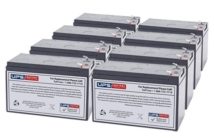Carbon emissions are a threat to global sustainability and one of the biggest human dangers. But now a Canadian company backed by Bill Gates claims that they can capture carbon for under $100 a tonne.
Currently, the price of capturing carbon is around $600 per tonne. The company’s “immediate goal” is to produce synthetic liquid fuels made from carbon and renewable energy.
A History of Scepticism:
Technological solutions to capturing carbon emissions have faced ongoing suspicion by scientists who point to its flaws. Capturing CO2 directly from the air has been considered as a more substantial means of reduction mirroring the action of trees.
Plans to build solar shields in space, or to place materials within seabeds to soak up carbon are considered dangerous and a potential deflection from getting individuals to cut their emissions. The idea of capturing carbon was first developed by a scientist named Klaus Lackner in the 1990s. Subsequently, various technology companies have built expensive models of carbon removing devices.
In 2017, a Swiss company called Climeworks revealed a direct air capture installation that extracted carbon and supplied it to a greenhouse to fertilize cucumbers and tomatoes.
About Carbon Engineering:
The Carbon Engineering company was established in 2009 with funding from Bill Gates and Canadian oil sands financier Normal Murray Edwards. They have been running a pilot plan since 2015, and capture around one tonne of CO2 daily.
The Capturing Process:
They suck air into a modified cooling tower equipped with fans. The CO2 comes into contact with a liquid that reacts with it. After various processing steps, a purer stream of CO2 is extracted and the capturing liquid is placed back to the air contractor.
The Canadian-based company is able to significantly reduce cost because they adapt existing technologies in their methodology. The company makes around one barrel a day through the combination of pure CO2 with hydrogen derived from water – using renewable energy.
The company believes this approach to liquid fuel is advantageous over biofuels because it makes use of less land and water. This can potentially change the ways in which people think of technologies.
CO2 Emissions:
Carbon dioxide enters the atmosphere through burning fossil fuels. Coal, gas, oil, waste, trees and wood products are fossil fuels that are burned. However, emissions can also be a result of chemical reactions like the manufacturing of cement and factory farming.
Carbon dioxide is naturally removed from the environment through the absorption by plants, referring to the biological carbon cycle.
CO2 can remain in the atmosphere for various amounts of time, ranging from several years to thousands of years. All of these gases stay in the atmosphere long enough to mix together. Therefore, the amount that we measure in the air is around the same all over the world regardless of the source of these emissions.
Beliefs Around Carbon Engineering:
Industry specialists point to the firm’s cost reduction in carbon emission reduction. However, it also site that support is necessary from governments in order to reach maximum carbon capture potentials. National legislations do not always provide enough incentive for wide-scale implementation. We’re sure we’ll be hearing more about the process in the coming years.




